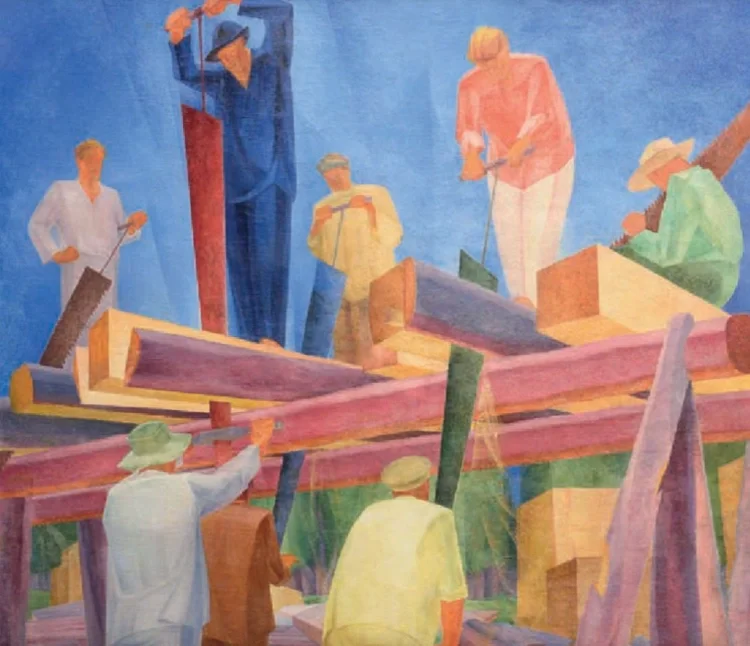
Spear’s speaks to eye witnesses of the theft that received global attention, where four ‘well dressed’ men entered the MECC and conspired to stuff artworks into a bag. By Arun Kakar
At the turn of the 21st century, there were fewer than 60 art fairs in the world each year. By and large, they were exclusive, discreet events in historic art world hubs such as Cologne and Basel. Then there was an explosion. By 2019, the last full year before the pandemic, the number had swelled to almost 300.
In principle, this is a good thing. Art fairs are a buyer’s dream: all the best galleries are stuffed under one roof, exposing collectors to new dealers and vice versa, with the commercial buzz of an Eighties trading floor. Recently, however, the sheer number of fairs has also made it harder to sniff out the best work and has prompted industry magazine Artnet to coin the phrase ‘fairtigue’ to describe the hamster wheel of ‘alcohol and air kisses’ that art world insiders know so well.
‘There are too many fairs, too many galleries, too many artists and not enough collectors,’ one leading art dealer told me this summer as we chatted on the white-carpeted concourse of the MECC exhibition centre in Maastricht during one of the two VIP days at the European Art Foundation (TEFAF) art fair. Yet here he was, in the thick of the hubbub; Tefaf Maastricht is not like those other art fairs.
‘For a lot of dealers, including me, this is the foremost fair that we participate in,’ said Omer Tiroche of his eponymous gallery on Conduit Street. ‘The quality of the work was not compromised.’ Tiroche’s booth was stuffed with work from the likes of Dali, Basquiat and Caro, among others.
Work of this level is par for the course here, where visitors can breeze from Gainsborough to Baselitz and segue between ancient Japanese Samurai armour to late medieval astronomical instruments in less than half an hour.
There are the names that everyone knows, but the fair really excels when it comes to the unexpected. Ukrainian specialist James Butterwick, for instance, brought one of the most talked-about booths of the fair with a focus on Oleksandr Bohomasov, a key but mostly forgotten figure in the Ukrainian avant-garde. The quality of work across the fair is ‘absolutely staggering’, the ebullient Butterwick told me.
Over the course of 34 years, TEFAF has remained reluctant to lower its standards — or to buckle to industry trends and fashions (for which old master dealers have been grateful). Exhibitors queue up to be featured. One debutant dealer told Spear’s it took them 15 years to get a booth.
For its return in 2022, the fair, which is customarily held in March, took place in June, hot on the heels of what one insider described as a ‘terrific’ Art Basel a week earlier. Masterpiece London, Documenta, the Venice Biennale and Brafa were all clustered together in the same quarter of the year.
Most dealers at TEFAF Maastricht noted a decrease in footfall compared to previous years, possibly due to this scheduling glut. The fair has also slimmed down from 280 dealers to 242, and from 11 days to six. Still, if one were to throw a ball in the MECC, it is likely it would be caught by an HNW: a stream of more than 100 private jets was said to have flowed through Maastricht airport during the fair.
During the VIP days, dealers rubbed shoulders with everyone from fast-talking US museum representatives to the bastions of European old money. Notable sales included a £500,000 Gormley’s Hove sculpture (White Cube), de Villandrando’s old master Portrait of a Noblewoman for EUR700,000 (Colnaghi) and a set of Il Riccio terracotta roundels for more than EUR3 million (Steinitz). Those are just the confirmed deals, too: works from the likes of Gentileschi and Goya were among those mooted to have sold around the seven-figure range. Serious business was being done. Then the mood changed.
At around 11am on 28 June, a group of four reportedly ‘well dressed’ men wearing flat caps entered the MECC and headed towards the booth of Symbolic & Chase, an Old Bond Street-based jeweller, which was displaying a stunning set of wares spanning from 20th-century gold Shakudo to modern micro mosaics. According to reports, one man brandished a firearm while another smashed its cases with a sledgehammer and stuffed items into a bag. In a video that circulated on social media, one visitor appears to have picked up a vase in an attempt to confront the robbers, but quickly put it back.
‘When I saw it, it’s so bizarre that you don’t believe that it’s happening,’ said Butterwick, who saw the heist and appears in the video of the break-in. ‘I saw this amazingly brave Dutch guy marching to deal with them and he’s a big guy. I sort of shuffled up towards it, saw all the guns and was like, “Fuck this!”’
The TEFAF Maastricht incident has received global attention, but as shocking as it was, the robbery was not unique. At London’s Masterpiece fair in 2017, £3 million worth of jewellery was stolen, and TEFAF has twice been burgled: once in 2008, when a $1.8 million necklace was stolen, and again in 2010, when a $1.3 million ring and necklace were looted. Fairs represent just the tip of a very large iceberg: the Art Loss Register (which has previously held a booth at TEFAF) runs to almost 700,000 works.
The relationship between the art world and art theft has always been one of uncomfortable co-existence, which might come to explain why the event – which received global attention from the press – was not met with more indignation. Dealers at Maastricht who Spear’s asked about the event remained tight-lipped, and Butterwick was remarkably unfazed. ‘I mean, the fact is, it’s a one-off, isn’t it?’ he tells Spear’s. ‘It’s still an amazing fair.’






